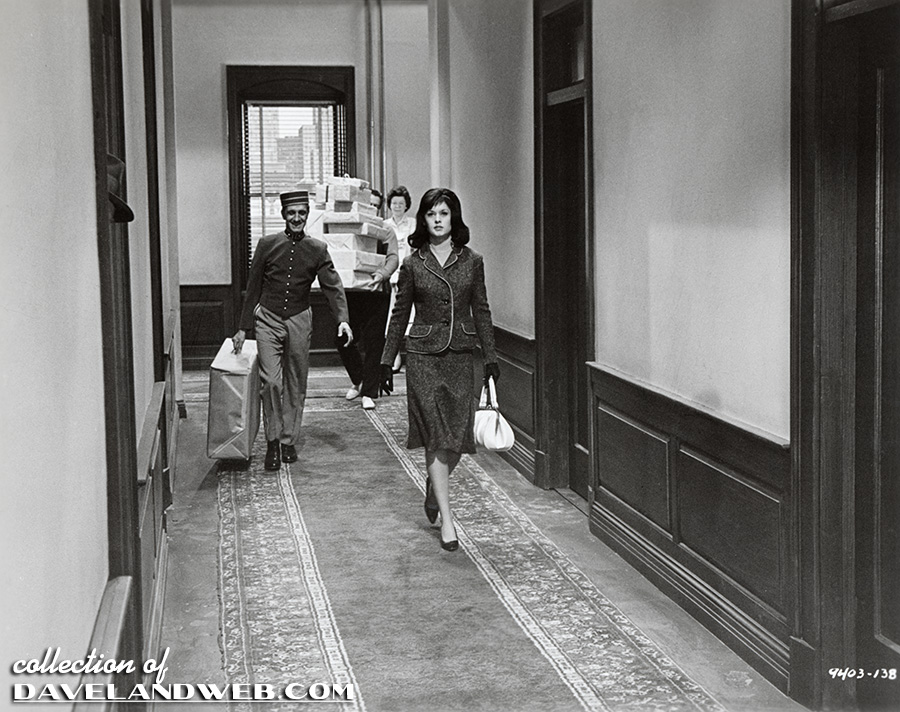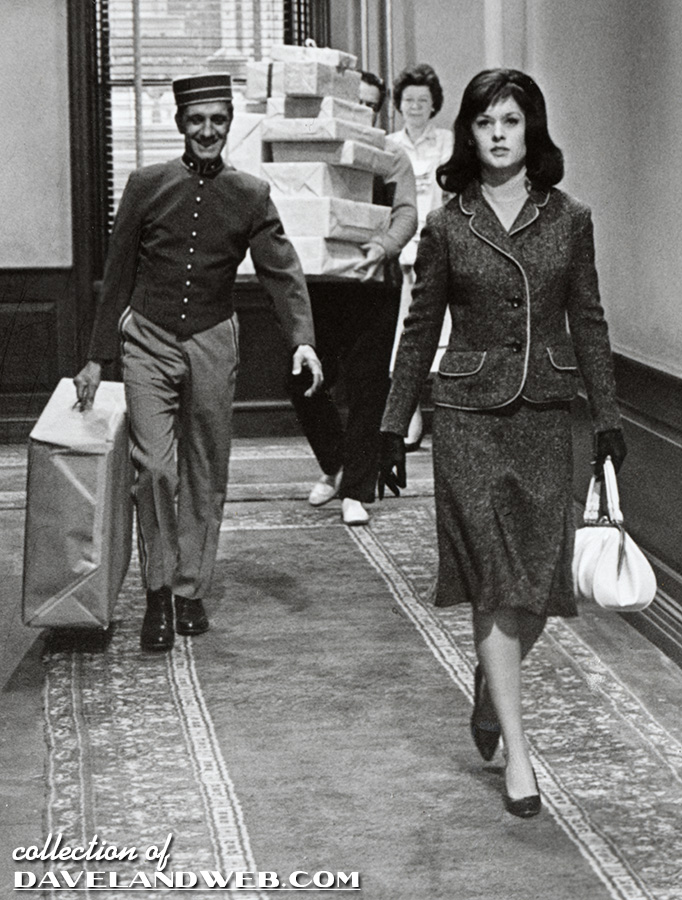
In Hitchcock's controversial 1964 film "Marnie," it takes quite awhile before his leading lady's (Tippi Hedren) face is revealed. Hitch didn't pick up the moniker "The Master of Suspense" for nothing!
The first shot of the movie shows Tippi from the rear, waiting for her train (filmed at San Jose's Diridon Train Station). Her bright yellow bag and hideous black wig stand out like a sore thumb.
Our next view of her shows her in a less full black wig (wearing the same suit from the previous shot), walking down the hallway of her hotel, accompanied by a bellman who is loaded down with the loot from what was presumably a very successful day of shopping. Black Friday perhaps?

The little bonus for this scene is that it happens to be the one that Hitchcock chose for his cameo appearance. He looks so devilishly sheepish as he peers from his hotel room.

For the movie's publicity still that is meant to capture this scene, Tippi's direction down the hallway is reversed, allowing the audience to see her from the front.

Not only that, but she now has an entourage of two more assisting the bellman with the packages and luggage. Was this how the scene was originally intended or just something for the sake of the still? Also interesting to note that there is a fedora sticking out of the room that Hitchcock was exiting from in the movie. Obviously not Hitchcock's, but supposedly the hat was to represent the appearance of an extra. As you can tell, I just love these details.

While we're covering it, I have a question that has always bothered me about this film. Being a nitpicker at times, it has always seemed a little strange that Marnie is able to wash the black dye out of her hair...

and seconds later, becomes a perfect blonde. Is this really how it works when you do a home dye job? Either that or Marnie was a very talented hair colorist on the side.

See more "Marnie" photos on my Alfred Hitchcock page.

I always thought of the black dye wash scene to instant blonde as artistic license to achieve a more dramatic effect and style rather than trying to replicate reality.
ReplyDeleteAlfred Hitchcock:
“I’m not interested in content. It’s the same as a painter not worrying about the apples he’s painting – whether they’re sweet or sour. Who cares?"
There are/were wash-out hair colors, but they aren't THAT good. I'm blonde, and when I was in theater we tried some of this stuff to make my hair black for a role, but it did not work that well. We ended up going the wig route.
ReplyDeleteA true dye job from black to blonde would be a two-step process involving bleaching the color out of the hair first, then dying it blonde. It's very hard on the hair.
Ken - So true. Too often I get caught up in the details and forget it's supposed to be a movie. Easier to accomplish with a fantasy or a musical when you're obviously supposed to suspend disbelief. Hitchcock was a true dichotomy though; he would go to great lengths for realism on his sets, recreating an actual restaurant or researching the type of apartment a character might have, and yet, on some of his films (especially "Marnie") there are other things he just glossed over.
ReplyDeleteCourtney - I think her hair would have been fried, don't you?